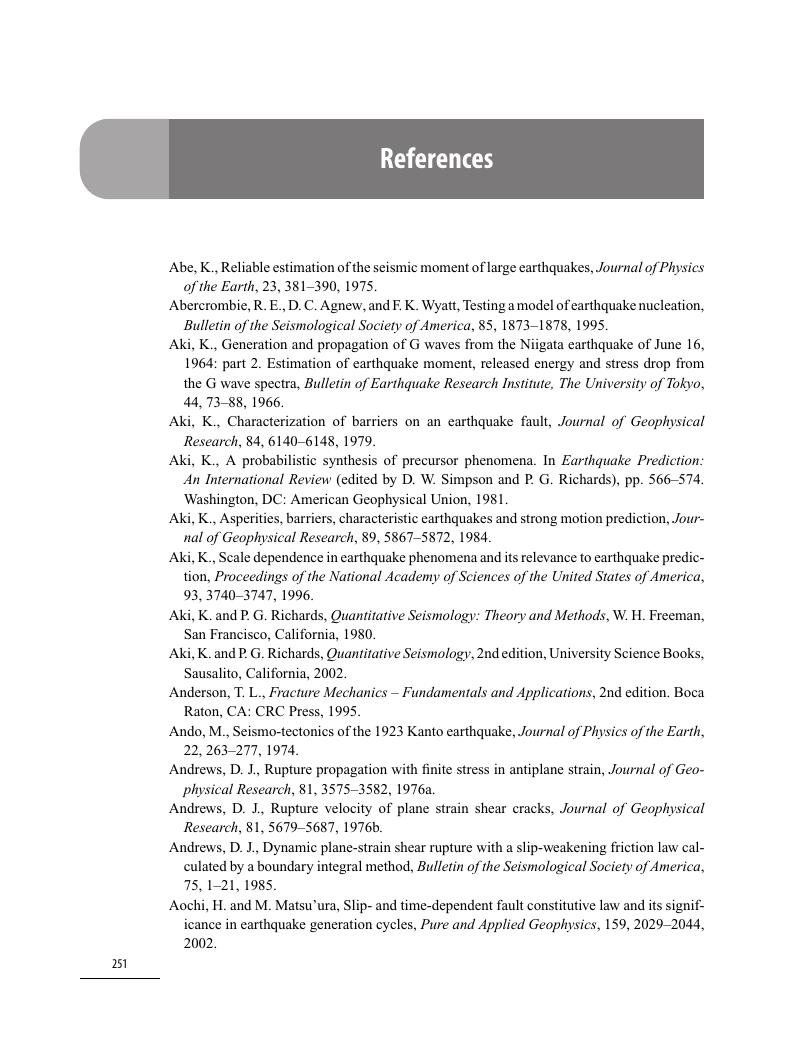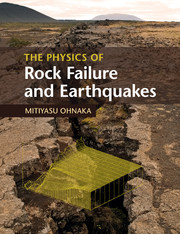Book contents
- Frontmatter
- Contents
- Preface
- 1 Introduction
- 2 Fundamentals of rock failure physics
- 3 Laboratory-derived constitutive relations for shear failure
- 4 Constitutive laws for earthquake ruptures
- 5 Earthquake generation processes
- 6 Physical scale-dependence
- 7 Large earthquake generation cycles and accompanying seismic activity
- List of illustration credits
- References
- Index
- References
References
Published online by Cambridge University Press: 05 April 2013
- Frontmatter
- Contents
- Preface
- 1 Introduction
- 2 Fundamentals of rock failure physics
- 3 Laboratory-derived constitutive relations for shear failure
- 4 Constitutive laws for earthquake ruptures
- 5 Earthquake generation processes
- 6 Physical scale-dependence
- 7 Large earthquake generation cycles and accompanying seismic activity
- List of illustration credits
- References
- Index
- References
Summary

- Type
- Chapter
- Information
- The Physics of Rock Failure and Earthquakes , pp. 251 - 266Publisher: Cambridge University PressPrint publication year: 2013



